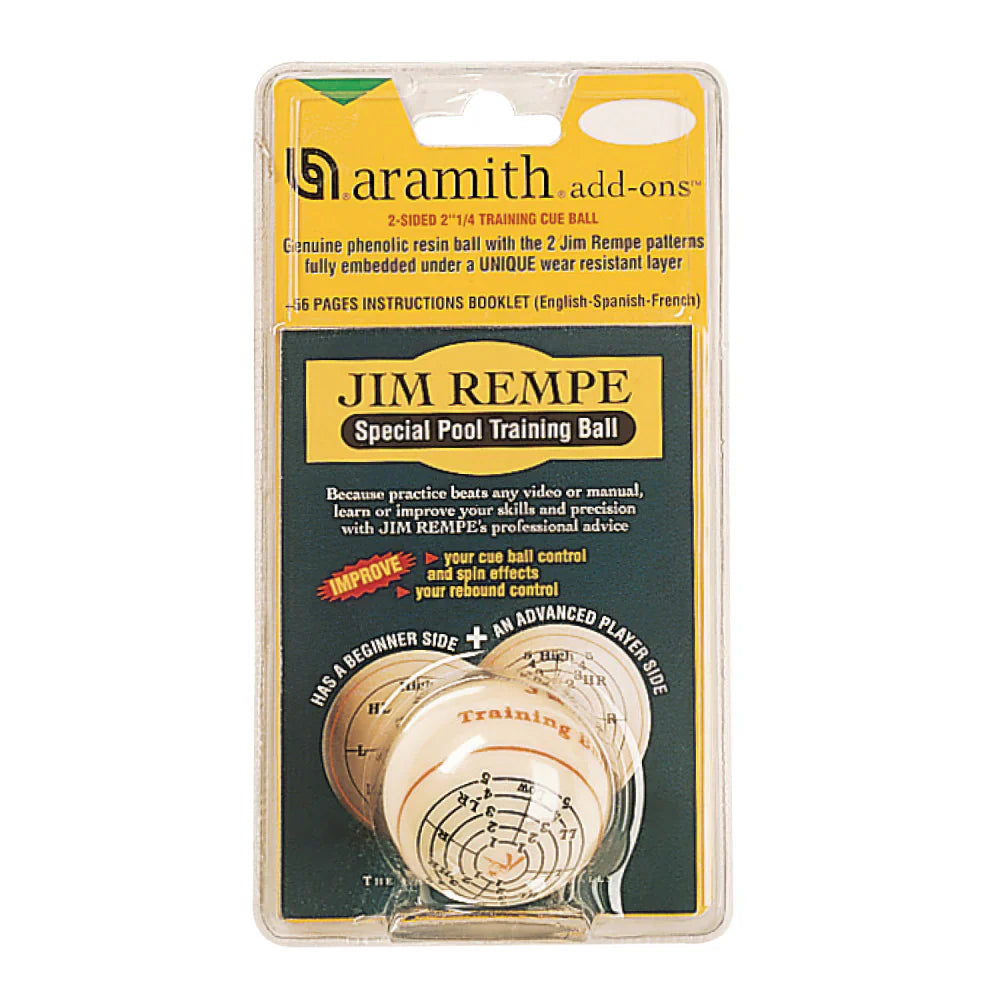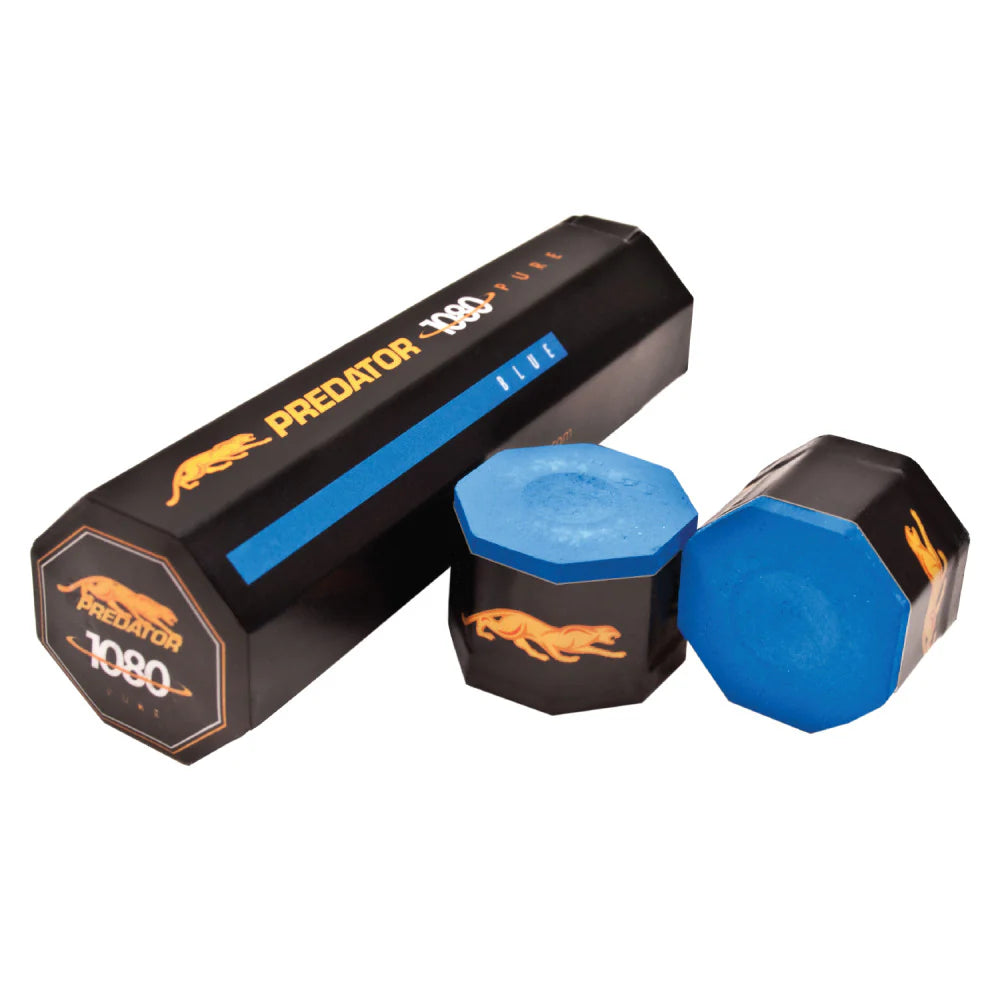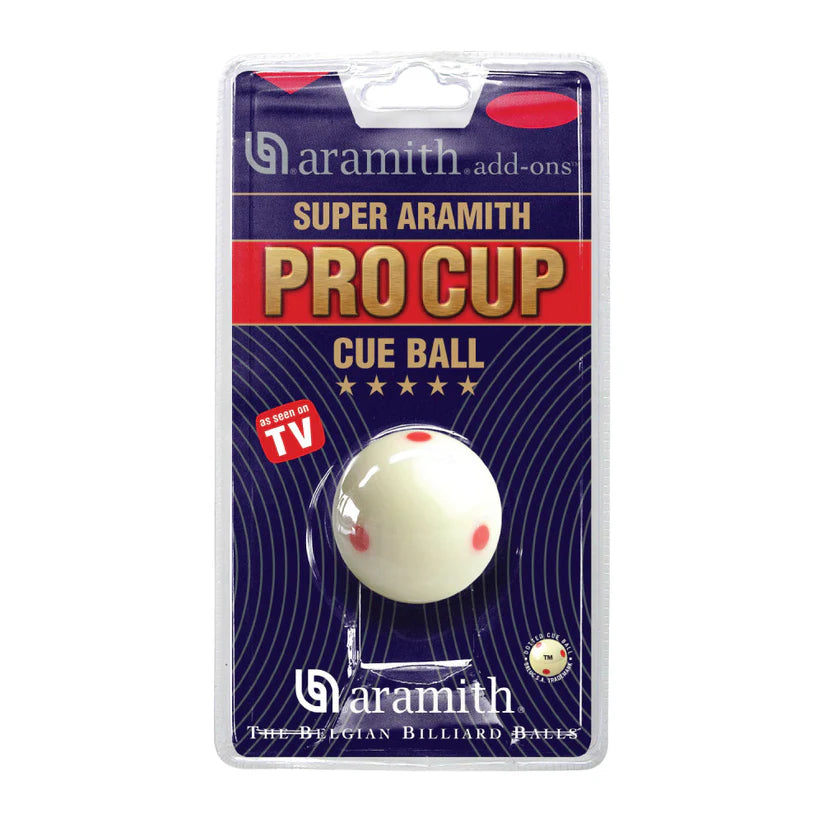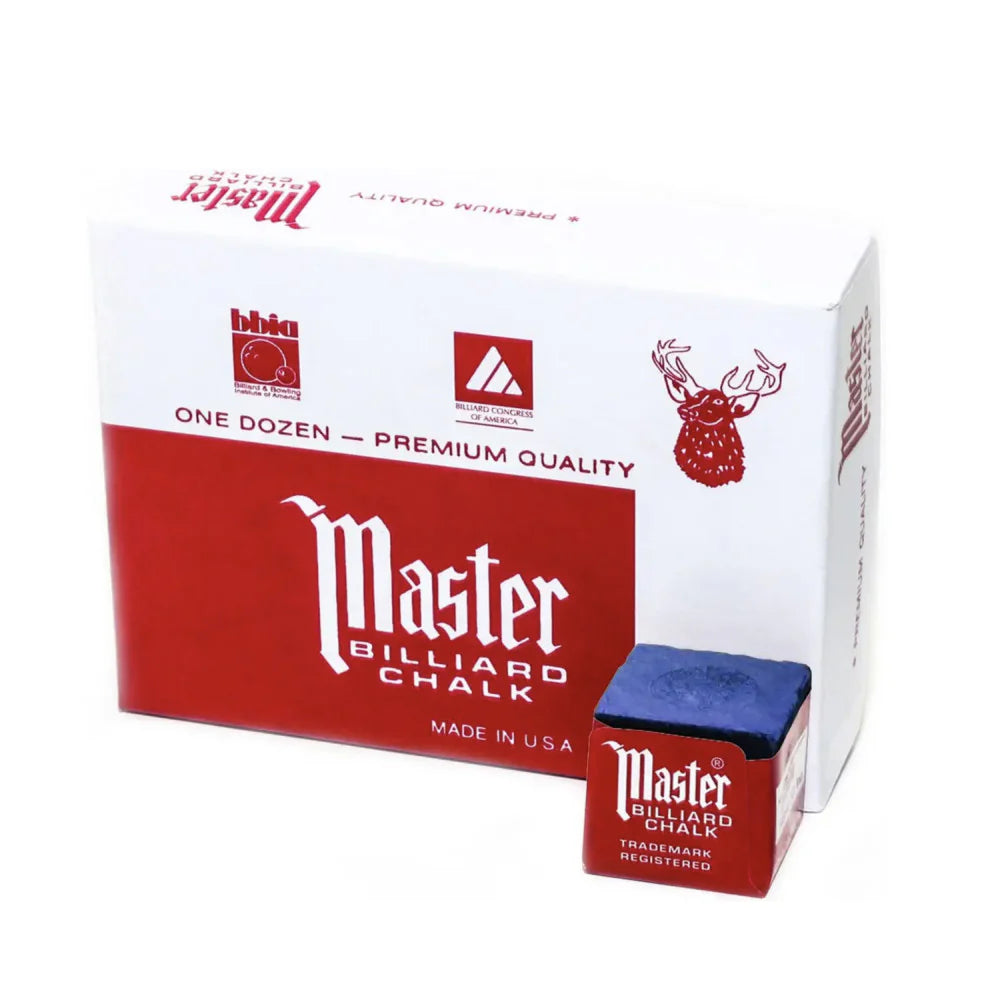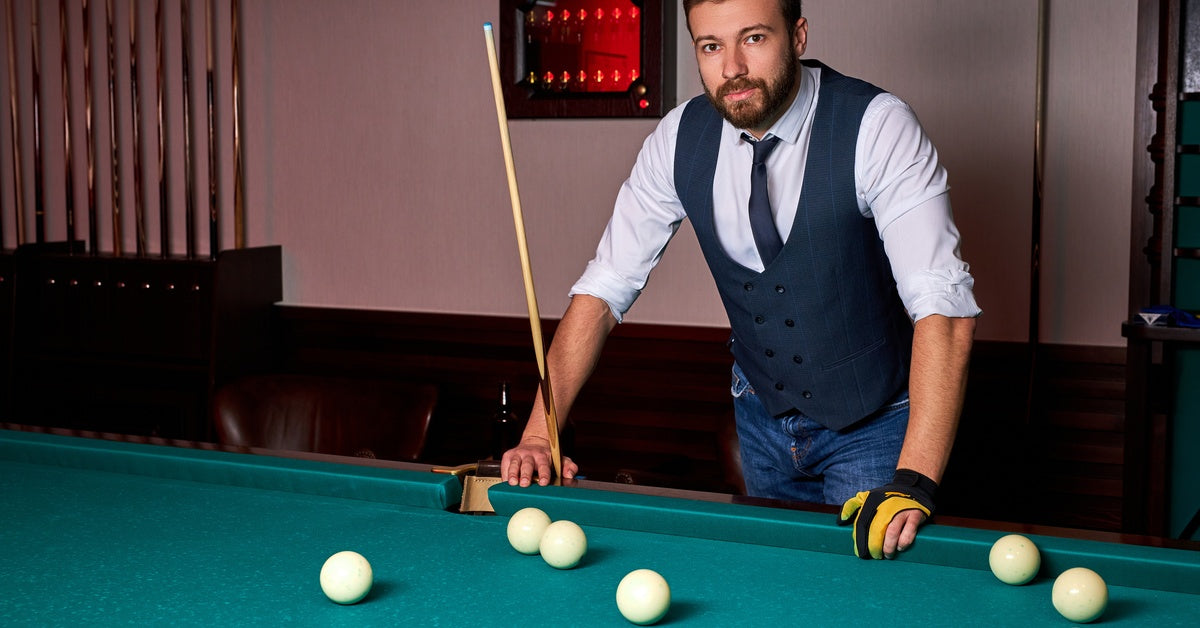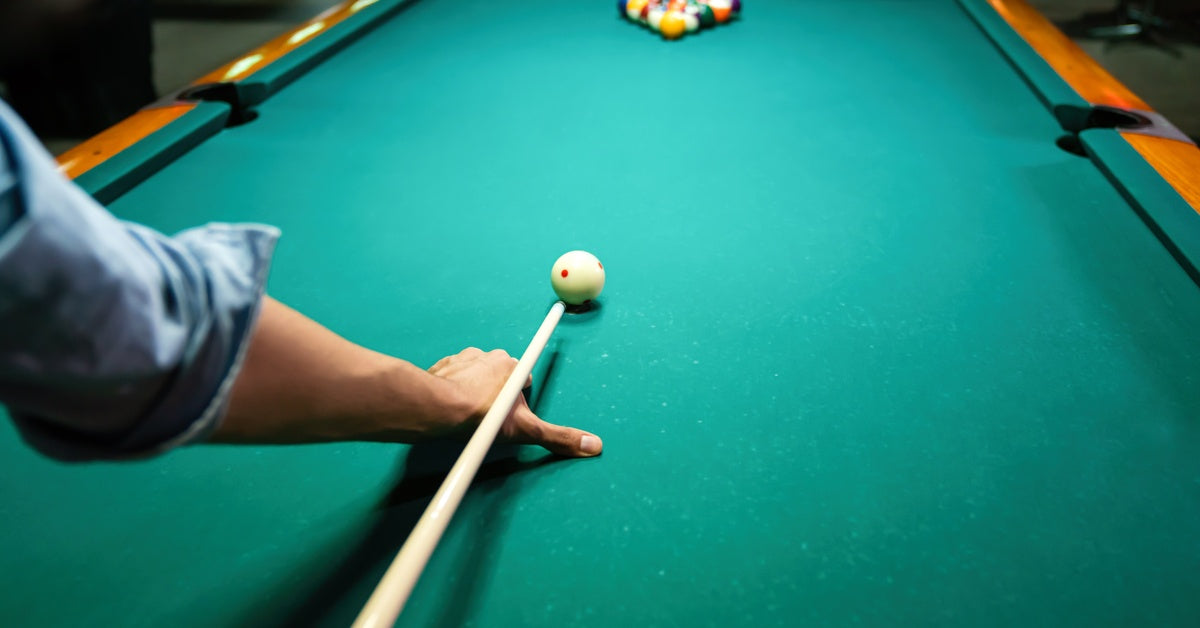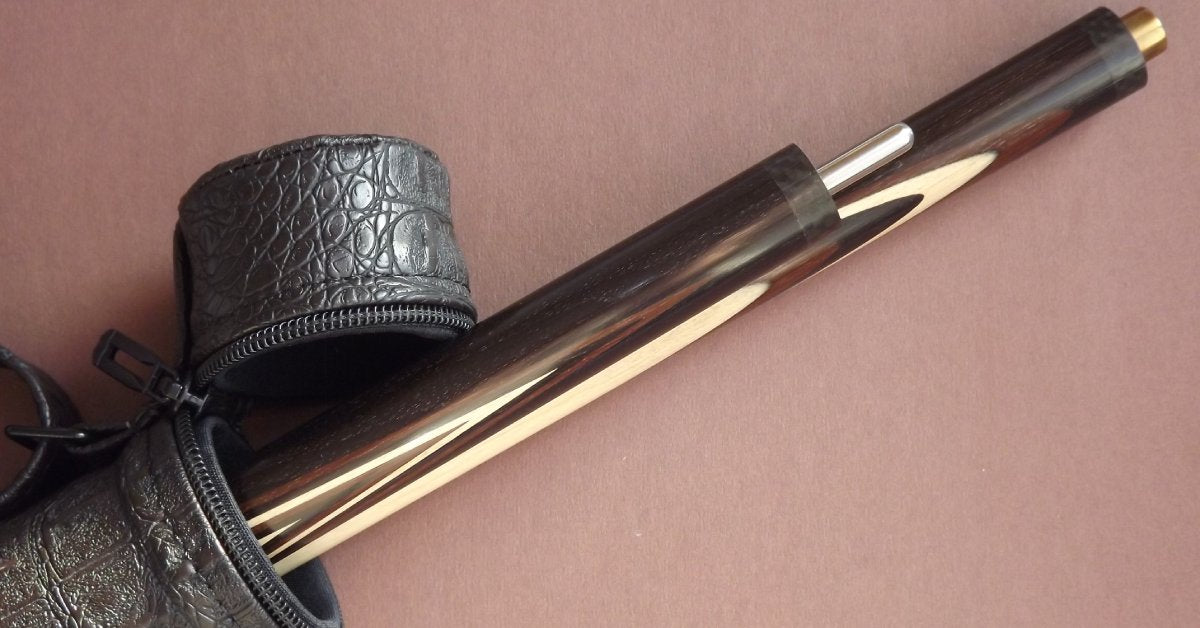Even though skill and practice are the keys to mastering trick shots in pool, having the right equipment certainly doesn’t hurt. That’s because trick shots require precise control, exceptional accuracy, and the ability to generate specific spin effects, all of which a high-quality cue can help with.
Understanding which traits can help improve your game will make it easier for you to select a cue that will take your game to the next level. To get you on the right track, this guide is here to explore the six essential characteristics that make some cues better for trick shots than others.
1. Weight and Balance
The weight of your cue fundamentally impacts both control and power delivery during trick shots. Most trick shot specialists prefer cues ranging from 18 to 19 ounces. The lighter you go, the easier it’ll be to nail your shots. This is because lighter options provide enhanced finesse for delicate shots requiring minimal force. These lighter cues allow for more precise movements and better control when executing shots that demand surgical-like accuracy.
Balance point plays an equally critical role in trick shot execution. A well-balanced cue ensures stability during complex shots that require unusual angles or awkward positions. The ideal balance point typically falls 16 to 18 inches from the butt end, though personal preference significantly influences this specification. Still, when it comes to trick shots, many players prefer a slightly forward balance for increased tip control.
2. Tip Material and Shape
Since the tip is so vital for precision, cue tip material is a crucial factor that’ll help you achieve greater success with your trick shots. Soft tips, typically made from layered leather, provide superior spin control by gripping the cue ball longer during contact. This extended contact time allows for more dramatic English effects, essential for shots requiring extreme spin.
Medium tips offer a balanced approach, providing adequate spin control while maintaining reasonable durability. While these aren’t always the best option for trick shots, there will be times when more strength in your tip will help you nail the shot you’re attempting.
Outside of material, the tip shape is also worth considering, as it significantly impacts both spin application and accuracy. A properly rounded tip ensures consistent contact with the cue ball across various shot angles. The curvature should match a nickel’s radius—not too flat, which reduces spin potential, and not too rounded, which can cause miscues. Regular maintenance of tip shape through careful sanding and shaping ensures optimal performance throughout your playing sessions.
3. Shaft Flexibility and Low Deflection

Low-deflection shafts represent a game-changing technology for trick shot enthusiasts. These specialized shafts minimize cue ball deflection when applying side spin, allowing for more accurate aiming even when using significant English. Traditional shafts can deflect the cue ball several inches off the intended path when maximum side spin is applied, while low deflection shafts reduce this deviation to mere fractions.
The science behind low deflection involves strategic weight reduction in the front portion of the shaft, typically achieved through hollow construction or specialized core materials. This design maintains the shaft’s structural integrity while reducing the mass that influences cue ball deflection.
Material considerations play a vital role here as well. High-quality hard maple remains the gold standard for traditional shafts, offering excellent feel and responsiveness. Carbon fiber shafts are worth your consideration as well since they provide superior consistency and virtually eliminate deflection. It’s worth noting, though, that some players find them lacking in feedback compared to wood alternatives.
4. Grip and Handle Design
It should go without saying that your grip connection with the cue can directly affect shot precision and comfort during extended practice sessions. That’s why many pros use leather wraps that provide improved grip security. The best part is that they conform to your hand over time, developing a more personalized feel. Irish linen is also a good option that offers a traditional option with good moisture absorption and a secure grip surface.
If you have to play in high-humidity conditions, know that rubber grips excel here, providing a consistent feel regardless of temperature variations. However, some players find rubber grips less responsive than those made from natural materials.
Once you’re set on a grip, know that handle thickness can also significantly impact shot precision and comfort. Thinner handles, typically 1.25 to 1.375 inches in diameter, provide enhanced feel and control for finesse shots. However, if you have larger hands, you still might want to consider a thicker handle.
5. Customization Options
To make the most precise shots possible, you may need to fine-tune your cue on the fly. Adjustable weight systems are ideal here as they allow you to tweak your cue’s characteristics as needed. These systems typically use removable weights in the butt section, enabling you to modify the cue’s balance point and overall weight. This flexibility proves invaluable when transitioning between different types of trick shots throughout a performance.
Interchangeable shaft systems provide ultimate versatility for serious trick shot practitioners. Having multiple shafts with different characteristics—perhaps one low deflection shaft for precision shots and one traditional shaft for maximum feel—allows you to optimize your equipment for each specific shot requirement.
6. Durability and Build Quality

Even though any cue can initially perform well, a serious pool player will need something that’ll last for many years. High-quality materials are the best way to ensure your cue maintains its performance characteristics over thousands of shots.
Premium hard maple provides excellent durability while maintaining consistent playing characteristics. Exotic woods like ebony or cocobolo offer enhanced density and unique aesthetic appeal, though they may require more careful maintenance.
Carbon fiber components resist warping and provide exceptional longevity, particularly important for the demanding nature of trick shot practice. These materials maintain their structural properties across temperature and humidity variations that might affect traditional wood construction.
Regardless of the type of trick shot cue you buy, resistance to warping remains absolutely critical for trick shot accuracy. Even minimal warping can throw off precise shots by fractions of inches, turning successful attempts into near misses. Quality construction techniques, proper seasoning of materials, and appropriate storage practices all contribute to maintaining a straight cue.
Don’t Overlook the Price vs. Performance Ratio
If you’re a pool player looking to boost your game by any means necessary, price likely isn’t a huge factor, but that doesn’t mean you should overpay for a masse cue stick. Fortunately, many manufacturers offer high-performance options in the $200 to $500 range that provide professional-level characteristics without premium pricing. These cues often feature high-quality construction, low-deflection technology, and customization options that rival those of much more expensive alternatives.
Value-oriented options focus on essential performance characteristics while ignoring purely cosmetic features. Prioritizing functional elements like shaft quality, tip performance, and weight distribution over elaborate inlays and exotic materials can deliver exceptional trick shot capability at reasonable prices.

